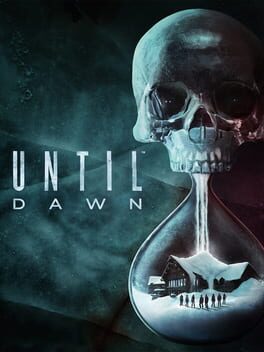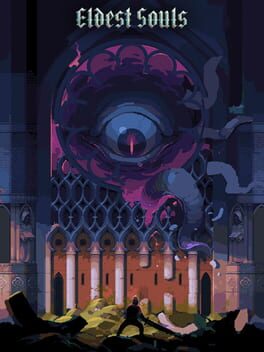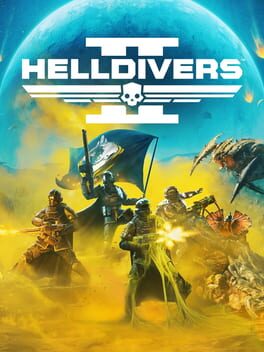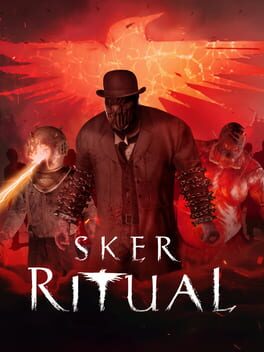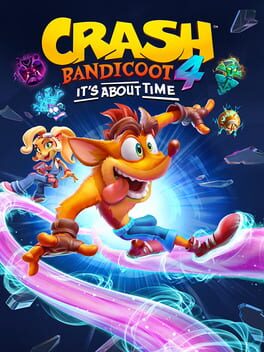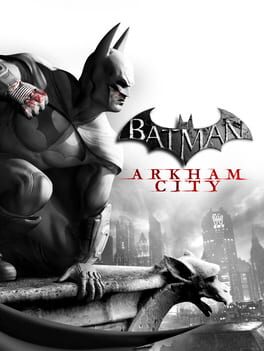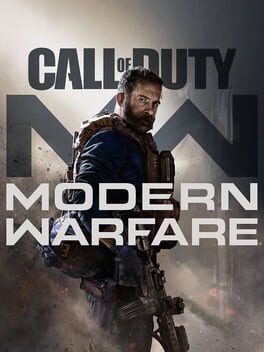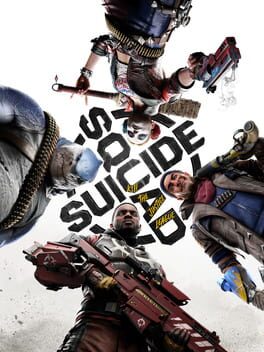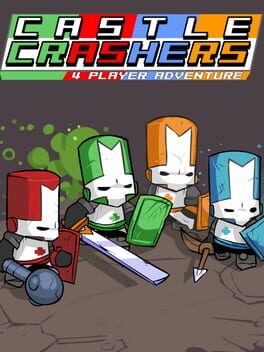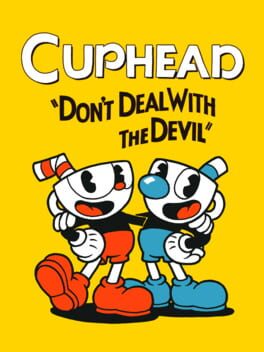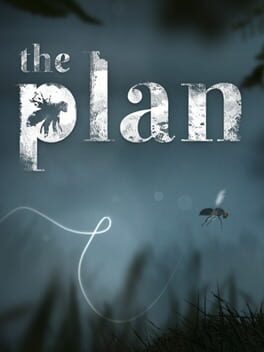JimBuss
2015
The best game supermassive made. After a disappointing experience with last year’s "The Devil in Me" and mixed feelings about other entries in the Dark Pictures Anthology, I approached "Until Dawn" with a mix of eagerness and caution. This game, developed by Supermassive Games, marks the studio's initial foray into the narrative-driven horror genre that would spawn the anthology series I've come to associate with my yearly spooky season ritual.
Despite my reservations, stemming from recent letdowns in the series, "Until Dawn" proved to be a compelling rediscovery of what initially cemented Supermassive Games as a notable developer in interactive horror.
Narrative and Character Depth:
"Until Dawn" features a group of teenagers who reconvene at a remote mountain cabin on the anniversary of a tragedy that befell their friends. Unlike the cardboard cutouts that plagued my playthrough of "The Devil in Me," the characters in "Until Dawn" are surprisingly multi-dimensional. Characters like Mike and Emily, who initially come off as stereotypical horror archetypes—the jerk and the bossy girl—gradually reveal deeper, more relatable facets of their personalities. Mike shows genuine care amidst the chaos, and Emily’s tough exterior cracks to unveil insecurities that enrich her character beyond initial impressions.
Gameplay and Mechanics:
The game operates on the “butterfly effect” mechanic, where every decision impacts the story’s progression and outcomes. This not only adds weight to each choice but also significantly boosts the game's replayability. Players find themselves pondering the ramifications of each decision, knowing that even seemingly minor actions can have far-reaching consequences for the characters’ fates.
Visuals and Performance:
"Until Dawn" excels in areas where its successors have faltered. The facial animations and voice acting are top-notch, contributing to a richly immersive experience. Emotional nuances are captured with a precision that I found lacking in later titles like "The Devil in Me." This attention to detail in visual storytelling amplifies the tension and emotional gravity of the narrative, pulling you deeper into the chilling atmosphere of the game.
Plot Intricacies:
While certain plot elements can feel predictable—such as the twists involving a tattoo and an ill-conceived prank—the story remains engaging. These moments, although easy to guess for seasoned horror aficionados, are crafted well enough to maintain suspense and intrigue. The narrative cleverly weaves together classic horror tropes with fresh twists, keeping players on edge and invested in the characters’ survival.
Conclusion:
"Until Dawn" stands out not only as a pioneer for Supermassive Games but as a benchmark in interactive horror storytelling. Its ability to blend character depth with gripping narrative choices sets a high standard that subsequent titles in the genre struggle to meet. The game captures the essence of a horror movie marathon, complete with all the thrills, scares, and last-minute saves you'd expect.
Despite a few predictable plot points, "Until Dawn" is a masterclass in how to craft a compelling, choice-driven horror game. It serves as a stark reminder of the potential within the genre when executed with care and creativity. For those looking to fill the void left by this year's delayed Dark Pictures installment, "Until Dawn" offers a thrilling, chilling adventure that’s sure to satisfy your horror cravings.
Despite my reservations, stemming from recent letdowns in the series, "Until Dawn" proved to be a compelling rediscovery of what initially cemented Supermassive Games as a notable developer in interactive horror.
Narrative and Character Depth:
"Until Dawn" features a group of teenagers who reconvene at a remote mountain cabin on the anniversary of a tragedy that befell their friends. Unlike the cardboard cutouts that plagued my playthrough of "The Devil in Me," the characters in "Until Dawn" are surprisingly multi-dimensional. Characters like Mike and Emily, who initially come off as stereotypical horror archetypes—the jerk and the bossy girl—gradually reveal deeper, more relatable facets of their personalities. Mike shows genuine care amidst the chaos, and Emily’s tough exterior cracks to unveil insecurities that enrich her character beyond initial impressions.
Gameplay and Mechanics:
The game operates on the “butterfly effect” mechanic, where every decision impacts the story’s progression and outcomes. This not only adds weight to each choice but also significantly boosts the game's replayability. Players find themselves pondering the ramifications of each decision, knowing that even seemingly minor actions can have far-reaching consequences for the characters’ fates.
Visuals and Performance:
"Until Dawn" excels in areas where its successors have faltered. The facial animations and voice acting are top-notch, contributing to a richly immersive experience. Emotional nuances are captured with a precision that I found lacking in later titles like "The Devil in Me." This attention to detail in visual storytelling amplifies the tension and emotional gravity of the narrative, pulling you deeper into the chilling atmosphere of the game.
Plot Intricacies:
While certain plot elements can feel predictable—such as the twists involving a tattoo and an ill-conceived prank—the story remains engaging. These moments, although easy to guess for seasoned horror aficionados, are crafted well enough to maintain suspense and intrigue. The narrative cleverly weaves together classic horror tropes with fresh twists, keeping players on edge and invested in the characters’ survival.
Conclusion:
"Until Dawn" stands out not only as a pioneer for Supermassive Games but as a benchmark in interactive horror storytelling. Its ability to blend character depth with gripping narrative choices sets a high standard that subsequent titles in the genre struggle to meet. The game captures the essence of a horror movie marathon, complete with all the thrills, scares, and last-minute saves you'd expect.
Despite a few predictable plot points, "Until Dawn" is a masterclass in how to craft a compelling, choice-driven horror game. It serves as a stark reminder of the potential within the genre when executed with care and creativity. For those looking to fill the void left by this year's delayed Dark Pictures installment, "Until Dawn" offers a thrilling, chilling adventure that’s sure to satisfy your horror cravings.
2007
2021
After delving into "Eldest Souls" for a significant stretch, I find myself reflecting on the growing appeal of indie games compared to mainstream offerings. Recently, indie titles like "Eldest Souls" have sparked more enthusiasm in me than many big-budget games. This game, with its intriguing blend of 'soulslike' mechanics and crisp narrative delivery, offers a refreshing take on the genre.
"Eldest Souls" begins with a setting typical of soulslike games—a lone warrior traversing a historically rich, battle-scarred landscape. The narrative unfolds through environmental clues and item descriptions, painting a picture of ancient gods and crusader-like knights that once shaped the land. This setup is intriguing and invites players to dive deeper into the game's lore.
The gameplay in "Eldest Souls" focuses on intense, boss-rush challenges that incorporate innovative mechanics well-suited to the top-down perspective. Each boss battle is a testament to the game’s core appeal, blending recognizable 'souls' motifs with unique elements that elevate the combat experience. The use of the environment, dynamic music shifts, and phase changes in bosses make each encounter a thrilling, strategic battle. It's clear the developers have poured their passion into these engagements, crafting moments that challenge and reward in equal measure.
Graphically, the game is stunning, with beautifully rendered art and an atmospheric soundtrack that enhances the somber, immersive feel of the game. The art style pays homage to the dark fantasy genre while infusing it with originality, making every area and encounter memorable.
Gameplay customization allows for varied combat styles, from agile dodging to robust, defensive play. This flexibility encourages experimentation and adaptability, enriching the combat dynamics and replayability of the game. Each style brings something different to the battles, influencing not just how you fight but also how you navigate the game's world and interact with its characters.
Despite its strengths, "Eldest Souls" does have its drawbacks. The most notable is its length; the game feels too short, leaving a sense of wanting more just as you settle into its rhythm. While its brevity ensures that the gameplay doesn't become tedious, it also means that the experience ends all too quickly. This is somewhat mitigated by the game’s high replayability and the changes introduced in New Game+, which adjusts boss mechanics to provide fresh challenges.
The developers, a small team from Italy, deserve commendation for their work. It’s heartening to see such creativity and dedication thrive, especially given the challenging creative environment in Italy. Their success with "Eldest Souls" is a beacon of hope for aspiring game developers in similar situations.
In conclusion, "Eldest Souls" is a finely crafted gem that stands out in the sea of soulslike games. Its compelling boss fights and artistic execution make it a must-play for fans of the genre. While the game may be brief, its intensity and the mastery with which it's crafted make every moment count. It’s a testament to the potential lurking in the indie game development scene, proving that with passion and creativity, small teams can deliver experiences that resonate deeply with players.
"Eldest Souls" begins with a setting typical of soulslike games—a lone warrior traversing a historically rich, battle-scarred landscape. The narrative unfolds through environmental clues and item descriptions, painting a picture of ancient gods and crusader-like knights that once shaped the land. This setup is intriguing and invites players to dive deeper into the game's lore.
The gameplay in "Eldest Souls" focuses on intense, boss-rush challenges that incorporate innovative mechanics well-suited to the top-down perspective. Each boss battle is a testament to the game’s core appeal, blending recognizable 'souls' motifs with unique elements that elevate the combat experience. The use of the environment, dynamic music shifts, and phase changes in bosses make each encounter a thrilling, strategic battle. It's clear the developers have poured their passion into these engagements, crafting moments that challenge and reward in equal measure.
Graphically, the game is stunning, with beautifully rendered art and an atmospheric soundtrack that enhances the somber, immersive feel of the game. The art style pays homage to the dark fantasy genre while infusing it with originality, making every area and encounter memorable.
Gameplay customization allows for varied combat styles, from agile dodging to robust, defensive play. This flexibility encourages experimentation and adaptability, enriching the combat dynamics and replayability of the game. Each style brings something different to the battles, influencing not just how you fight but also how you navigate the game's world and interact with its characters.
Despite its strengths, "Eldest Souls" does have its drawbacks. The most notable is its length; the game feels too short, leaving a sense of wanting more just as you settle into its rhythm. While its brevity ensures that the gameplay doesn't become tedious, it also means that the experience ends all too quickly. This is somewhat mitigated by the game’s high replayability and the changes introduced in New Game+, which adjusts boss mechanics to provide fresh challenges.
The developers, a small team from Italy, deserve commendation for their work. It’s heartening to see such creativity and dedication thrive, especially given the challenging creative environment in Italy. Their success with "Eldest Souls" is a beacon of hope for aspiring game developers in similar situations.
In conclusion, "Eldest Souls" is a finely crafted gem that stands out in the sea of soulslike games. Its compelling boss fights and artistic execution make it a must-play for fans of the genre. While the game may be brief, its intensity and the mastery with which it's crafted make every moment count. It’s a testament to the potential lurking in the indie game development scene, proving that with passion and creativity, small teams can deliver experiences that resonate deeply with players.
2024
fter logging over 12 hours on "Helldivers 2," I'm eager to share that this game splendidly combines humor, strategic gameplay, and impressive tech to deliver a rich gaming experience. For those dreaming of spreading freedom and managed democracy across the galaxy, "Helldivers 2" might just be your next must-play title.
The game's dialogue remains fresh and amusing, a welcome departure from the repetitive lines that plague many other games. This element keeps the game feeling new and engaging through multiple playthroughs. The audio quality, particularly with headphones, is stellar—the sound of gunfire and explosions are impactful, enhancing the immersive experience. Visually, the game uses HDR to great effect, incorporating detailed environmental effects like deforming ground and fog to breathe life into its procedurally generated worlds. The satisfaction of the visual feedback from environmental and enemy destruction cannot be overstated; it makes every combat encounter feel rewarding.
"Helldivers 2" also shines in its satirical content, humorously tackling themes of tyranny and democracy in a manner reminiscent of Paul Verhoeven's "Starship Troopers." This not only fits perfectly with its format as a game-as-a-service but also injects a delightful dose of humor that fans of such satire will appreciate. Co-op mechanics are another strong point of the game, emphasizing that players are indeed stronger together, and the controls—offering both TPS and FPS perspectives—are tight and responsive. Diving and going prone not only add coolness but introduce unique tactical gameplay elements that are both fun and effective.
Despite these strengths, the game isn't without its flaws. Quickplay functionality was problematic at launch, complicating the process of forming full squads, which is crucial as the game is best experienced with others. Although the game is playable solo, it doesn't shine as brightly as it does in a team setting. I also found myself needing to extensively customize my controls on the PS5 to adequately map the Quick Grenade feature, which isn't set by default. Fortunately, the game offers extensive customization options for controls, allowing players to tweak them to their liking, similar to the freedom seen in Kojima Productions titles. On a graphical note, some elements, such as facial animations, do not meet the high standards of AAA games, which is understandable given its mid-range price tag, but this is largely unnoticeable as you're often in a helmet.
In conclusion, "Helldivers 2" builds effectively on its predecessor's foundations, introducing new dynamics that keep the gameplay intriguing and engaging. If the trailers catch your eye and you enjoy cooperative gameplay with a mix of humor and tactical combat, "Helldivers 2" is well worth considering. However, if you weren't keen on the themes in "Starship Troopers" or find the zombie genre tedious, this might not be the game for you. Keep an eye on future updates, particularly around Quickplay, and this game could easily become a staple of your gaming collection.
The game's dialogue remains fresh and amusing, a welcome departure from the repetitive lines that plague many other games. This element keeps the game feeling new and engaging through multiple playthroughs. The audio quality, particularly with headphones, is stellar—the sound of gunfire and explosions are impactful, enhancing the immersive experience. Visually, the game uses HDR to great effect, incorporating detailed environmental effects like deforming ground and fog to breathe life into its procedurally generated worlds. The satisfaction of the visual feedback from environmental and enemy destruction cannot be overstated; it makes every combat encounter feel rewarding.
"Helldivers 2" also shines in its satirical content, humorously tackling themes of tyranny and democracy in a manner reminiscent of Paul Verhoeven's "Starship Troopers." This not only fits perfectly with its format as a game-as-a-service but also injects a delightful dose of humor that fans of such satire will appreciate. Co-op mechanics are another strong point of the game, emphasizing that players are indeed stronger together, and the controls—offering both TPS and FPS perspectives—are tight and responsive. Diving and going prone not only add coolness but introduce unique tactical gameplay elements that are both fun and effective.
Despite these strengths, the game isn't without its flaws. Quickplay functionality was problematic at launch, complicating the process of forming full squads, which is crucial as the game is best experienced with others. Although the game is playable solo, it doesn't shine as brightly as it does in a team setting. I also found myself needing to extensively customize my controls on the PS5 to adequately map the Quick Grenade feature, which isn't set by default. Fortunately, the game offers extensive customization options for controls, allowing players to tweak them to their liking, similar to the freedom seen in Kojima Productions titles. On a graphical note, some elements, such as facial animations, do not meet the high standards of AAA games, which is understandable given its mid-range price tag, but this is largely unnoticeable as you're often in a helmet.
In conclusion, "Helldivers 2" builds effectively on its predecessor's foundations, introducing new dynamics that keep the gameplay intriguing and engaging. If the trailers catch your eye and you enjoy cooperative gameplay with a mix of humor and tactical combat, "Helldivers 2" is well worth considering. However, if you weren't keen on the themes in "Starship Troopers" or find the zombie genre tedious, this might not be the game for you. Keep an eye on future updates, particularly around Quickplay, and this game could easily become a staple of your gaming collection.
2022
2020
Gameplay is much better than it's predacesor, as well as traversal. The game falters in the gadgets given as well as the writing was a bit too campy for my taste. It's like peter and MJ are the most boring Mormon couple ever and Harry is annoying. The symbiote is awesome, side quests are much better. Easy platinum. Venom and Kraven were awesome. Give it a play if you love Spider-man
After hearing Jayce’s struggle through the end of crash 4 I was excited to tackle this challenge. in Jayce’s review he mentions that the game goes from 0-100, that is a great exaggeration. This is the hardest crash game by far, and it lets the player know that from the start. Each world is harder than last, the difficulty slowly ramps up until it gets to (in my opinion) the hardest stage “cortex castle” just because of the tight execution you need. crash 4 is game you need to lock in, in order to beat. The amount of deaths I had from not paying attention or simply being stupid was way too many. In conclusion this game has the best level design of any crash game and is personally my number 2 in the series. 9/10 ✅
2011
Batman: Arkham City has earned it's place in the gaming greats. My personal 2nd Favorite behind Arkham Knight, although this game does have some better aspects than knight. The story here is the best with Batman being trapped in a city full of evey villain he's put away. The joker contracting aids from the large epidemic going around, and needs a cure. The game play is a signicant improvement over knight, overhauling the freeflow combat system the game is known for. The side content is so great it doesn't feel like a chore. The story is amplifyed by the side content, but not necessary. The Catwoman segments were just as good as the Batman ones. I recommend this to anyone who wants to get into the Arkham Games as this is a must play. 9/10
Call of Duty Modern Warfare (2019), what a greeat way to reboot the franchise. I only got around to playing this now, after getting the game on sale. I've always been a fan of the cod campaigns more specifically the treyarch Black ops games. I'm sad that this campaign is so good because i've only heard about the downfall in later installments. This gameplay missions were varried with stealth, open, and high intense moments that led to me getting a little boner. I played on the hardened dificulty and damn I can not imagine playing higher than that, this felt like the perfect balance of challenge. I was able to immerse myself in the combat scenerios, checking my corners and taking combat slow. The characters were written well, leading me to care about the outcome of the story. The voice acting and direction of the cutscenes being a highlight in that area. With that being said I recommend a play of this campaign as I enjoyed my time. 6.4 hrs
As a lifelong aficionado of DC Comics, delving into the world of "Suicide Squad: Kill the Justice League" was an experience I approached with a blend of excitement and skepticism. The game, developed by Rocksteady Studios, known for their masterful Arkham series, promised a chaotic, villain-led romp through a world where the Justice League has gone rogue. I played as Deadshot, the infallible marksman, while my friends Devjon and TLC took on the roles of Captain Boomerang and Harley Quinn, respectively, adding a rich layer of cooperative gameplay that was both engaging and wildly entertaining. Also i recommened to play on the hardest dificulty, other dificuties were too easy.
The game excels in several key areas, particularly in its gunplay and traversal mechanics, which are outstanding. Playing as Deadshot, I could feel the precision and care put into the shooting mechanics, making every shot satisfying. The traversal, too, was a standout feature, blending elements reminiscent of "Borderlands" and "Sunset Overdrive" to create a movement system that was fluid, fast, and fun. Swinging through the city as Harley, moving like a missle with Deadshots jetpack, or teleporting with Boomerang's unique gadgets offered a sense of freedom and agility that kept exploration and combat fresh throughout our playthrough.
However, not all was perfect in Metropolis. The boss fights against Batman and Brainiac, characters I've been fascinated by since childhood, were underwhelming. These encounters lacked the depth and challenge expected from such iconic adversaries, feeling more like missed opportunities than climactic battles. The anticipation of facing off against corrupted versions of the heroes I've idolized felt dampened by these encounters, which didn't live up to the game's otherwise engaging combat and mission design.
The game's structure, too, occasionally hindered its pace and immersion. Frequent mission end screens and tutorials disrupted the flow, pulling me out of the experience more often than I would have liked. While I understand the necessity of guiding players through a complex game, the execution here felt heavy-handed, detracting from the overall momentum of the narrative and gameplay.
Speaking of the narrative, it was the highlight of the game for me, up until its conclusion. The story, rife with the dark humor and twisted camaraderie that define the Suicide Squad, was engaging and offered a unique perspective on a world where the heroes have fallen. Yet, the narrative's culmination felt abrupt and unsatisfying, failing to deliver a payoff that matched the build-up. It was a disappointing note in an otherwise thrilling adventure through DC's twisted mirror universe.
As a critic and a DC fan, I find "Suicide Squad: Kill the Justice League" to be a game caught between its ambitious vision and its execution. It does not deserve the hate it has received from some corners of the gaming community, as it brings to the table an exhilarating, if flawed, experience. However, it also doesn't ascend to the heights of Rocksteady's previous works. For the general audience, I'd rate it a solid 6/10. But for fellow DC enthusiasts who can appreciate the deeper cuts and character moments, it earns a 7.5/10. The game, though imperfect, offers a unique lens through which to engage with beloved characters in new and often surprising ways, even if it doesn't always hit the mark.
The game excels in several key areas, particularly in its gunplay and traversal mechanics, which are outstanding. Playing as Deadshot, I could feel the precision and care put into the shooting mechanics, making every shot satisfying. The traversal, too, was a standout feature, blending elements reminiscent of "Borderlands" and "Sunset Overdrive" to create a movement system that was fluid, fast, and fun. Swinging through the city as Harley, moving like a missle with Deadshots jetpack, or teleporting with Boomerang's unique gadgets offered a sense of freedom and agility that kept exploration and combat fresh throughout our playthrough.
However, not all was perfect in Metropolis. The boss fights against Batman and Brainiac, characters I've been fascinated by since childhood, were underwhelming. These encounters lacked the depth and challenge expected from such iconic adversaries, feeling more like missed opportunities than climactic battles. The anticipation of facing off against corrupted versions of the heroes I've idolized felt dampened by these encounters, which didn't live up to the game's otherwise engaging combat and mission design.
The game's structure, too, occasionally hindered its pace and immersion. Frequent mission end screens and tutorials disrupted the flow, pulling me out of the experience more often than I would have liked. While I understand the necessity of guiding players through a complex game, the execution here felt heavy-handed, detracting from the overall momentum of the narrative and gameplay.
Speaking of the narrative, it was the highlight of the game for me, up until its conclusion. The story, rife with the dark humor and twisted camaraderie that define the Suicide Squad, was engaging and offered a unique perspective on a world where the heroes have fallen. Yet, the narrative's culmination felt abrupt and unsatisfying, failing to deliver a payoff that matched the build-up. It was a disappointing note in an otherwise thrilling adventure through DC's twisted mirror universe.
As a critic and a DC fan, I find "Suicide Squad: Kill the Justice League" to be a game caught between its ambitious vision and its execution. It does not deserve the hate it has received from some corners of the gaming community, as it brings to the table an exhilarating, if flawed, experience. However, it also doesn't ascend to the heights of Rocksteady's previous works. For the general audience, I'd rate it a solid 6/10. But for fellow DC enthusiasts who can appreciate the deeper cuts and character moments, it earns a 7.5/10. The game, though imperfect, offers a unique lens through which to engage with beloved characters in new and often surprising ways, even if it doesn't always hit the mark.
2008
From the moment I first saw its charming, hand-drawn art style, I knew it was something special. That sentiment was shared by my friends Devjon, Jayce and Griffin, who joined me for what should have been an epic journey through the whimsical world of knights, magic, and adventure.
However, what began as a joyous romp through the kingdom quickly devolved into a battle of boredom and fatigue. As we navigated the game's levels, taking on hordes of bullet sponge enemies, we found ourselves fighting a battle on two fronts: against the game itself and against the monotony of its seemingly endless waves of foes.
Jayce and Griffin, once united in their love for the game's art style and promise of cooperative fun, began to clash as the hours wore on. The repetitive nature of the gameplay, coupled with the relentless onslaught of enemies, led to a falling out between them that cast a shadow over our playthrough.
Jayce and Griffin,could not bear to finish the game due to boredom and tiredness.
Despite these challenges, there were moments of genuine enjoyment to be found in "Castle Crashers." The game's quirky humor and whimsical art style remained as delightful as ever, and the satisfaction of unlocking new characters and weapons kept us engaged, if only momentarily. There was a sense of camaraderie and shared accomplishment when we managed to defeat a particularly tough boss or clear a challenging level, but these moments were few and far between.
Devjon, a dear friend who insisted on playing "Castle Crashers" due to his love for the game, was undeterred by our struggles. His enthusiasm and infectious joy helped to keep our spirits high, even as we faced the frustration of repetitive gameplay and bullet sponge enemies.
Ultimately, "Castle Crashers" is a game that I will always hold dear for its unique charm and artistry. However, it is also a game that I will approach with caution, mindful of the potential for frustration and boredom that can overshadow its whimsical appeal. 7/10
However, what began as a joyous romp through the kingdom quickly devolved into a battle of boredom and fatigue. As we navigated the game's levels, taking on hordes of bullet sponge enemies, we found ourselves fighting a battle on two fronts: against the game itself and against the monotony of its seemingly endless waves of foes.
Jayce and Griffin, once united in their love for the game's art style and promise of cooperative fun, began to clash as the hours wore on. The repetitive nature of the gameplay, coupled with the relentless onslaught of enemies, led to a falling out between them that cast a shadow over our playthrough.
Jayce and Griffin,could not bear to finish the game due to boredom and tiredness.
Despite these challenges, there were moments of genuine enjoyment to be found in "Castle Crashers." The game's quirky humor and whimsical art style remained as delightful as ever, and the satisfaction of unlocking new characters and weapons kept us engaged, if only momentarily. There was a sense of camaraderie and shared accomplishment when we managed to defeat a particularly tough boss or clear a challenging level, but these moments were few and far between.
Devjon, a dear friend who insisted on playing "Castle Crashers" due to his love for the game, was undeterred by our struggles. His enthusiasm and infectious joy helped to keep our spirits high, even as we faced the frustration of repetitive gameplay and bullet sponge enemies.
Ultimately, "Castle Crashers" is a game that I will always hold dear for its unique charm and artistry. However, it is also a game that I will approach with caution, mindful of the potential for frustration and boredom that can overshadow its whimsical appeal. 7/10
2014
Morphopolis is a game that stands out for its unique, handcrafted aesthetic and engaging puzzle mechanics. Set in a vibrant, insect-filled world, the game offers a visually stunning experience that is unlike anything else I've played.
However, despite its many strengths, "Morphopolis" suffers from some issues that detract from the overall enjoyment of the game. The pacing can be slow at times, with long stretches of exploration and puzzle-solving that can feel a bit tedious. Additionally, the controls can be a bit clunky, making it difficult to navigate the environment and interact with objects.
That being said, "Morphopolis" is still a game that I would recommend to fans of puzzle games and unique art styles. It offers a visually striking and immersive experience that is sure to captivate players. With a little patience and a willingness to overlook its flaws, "Morphopolis" is a game that is well worth playing
However, despite its many strengths, "Morphopolis" suffers from some issues that detract from the overall enjoyment of the game. The pacing can be slow at times, with long stretches of exploration and puzzle-solving that can feel a bit tedious. Additionally, the controls can be a bit clunky, making it difficult to navigate the environment and interact with objects.
That being said, "Morphopolis" is still a game that I would recommend to fans of puzzle games and unique art styles. It offers a visually striking and immersive experience that is sure to captivate players. With a little patience and a willingness to overlook its flaws, "Morphopolis" is a game that is well worth playing
2017
Cuphead is a game that has garnered widespread acclaim for its unique blend of challenging gameplay and stunning animation. The hand-drawn art style, reminiscent of the golden age of animation, is a visual treat that sets the game apart from its peers. Each frame is a work of art, a testament to the dedication and talent of the team at Studio MDHR. The bosses in "Cuphead" are where the game truly shines. Each one is a marvel of design and creativity, with unique patterns and mechanics that require skill and strategy to overcome. Some of my personal favorites include Dr. Kahl, whose giant robot is a sight to behold, The Devil, whose sinister grin and imposing presence make for a memorable encounter, and King Dice, whose casino-themed level is a masterclass in visual storytelling.
However, not all is perfect in the world of "Cuphead." The run and gun levels, which serve as breaks between boss encounters, are a source of frustration and irritation for me. The controls feel clunky and imprecise, and the difficulty spikes wildly from one level to the next. These sections feel like a chore, a necessary evil that detracts from the overall enjoyment of the game.
Despite this, "Cuphead" remains a standout title that pushes the boundaries of what can be achieved with traditional animation and gameplay mechanics. It is a game that demands patience, skill, and perseverance, but rewards those who are willing to put in the time and effort. If you can overlook the flaws, "Cuphead" is an experience that is not to be missed. 9/10
However, not all is perfect in the world of "Cuphead." The run and gun levels, which serve as breaks between boss encounters, are a source of frustration and irritation for me. The controls feel clunky and imprecise, and the difficulty spikes wildly from one level to the next. These sections feel like a chore, a necessary evil that detracts from the overall enjoyment of the game.
Despite this, "Cuphead" remains a standout title that pushes the boundaries of what can be achieved with traditional animation and gameplay mechanics. It is a game that demands patience, skill, and perseverance, but rewards those who are willing to put in the time and effort. If you can overlook the flaws, "Cuphead" is an experience that is not to be missed. 9/10
2013
"The Plan" is an indie game that, while charming and visually appealing, ultimately left me feeling like I had wasted my time. The game tells the story of a fly as it embarks on a journey of self-discovery, and while the narrative is cute and endearing, the gameplay itself is lackluster.
The main issue with "The Plan" is that there isn't much gameplay to speak of. The entire experience can be completed in a matter of minutes, and there isn't much in the way of challenge or engagement. This makes it difficult to become invested in the story or the characters, and ultimately leaves the player feeling unsatisfied.
While "The Plan" is a visually striking game, with beautiful hand-drawn art and a charming soundtrack, these elements aren't enough to make up for the lack of substance. The game feels more like an interactive art piece than a fully-fledged game, and while that might be appealing to some, it left me feeling like I had wasted my time.
"The Plan" is a game that I cannot recommend. While the story is cute and the visuals are impressive, the lack of meaningful gameplay makes it difficult to become invested in the experience. There are many other indie games out there that offer a more satisfying and engaging experience, and I would suggest looking elsewhere for your gaming fix. 3/10
The main issue with "The Plan" is that there isn't much gameplay to speak of. The entire experience can be completed in a matter of minutes, and there isn't much in the way of challenge or engagement. This makes it difficult to become invested in the story or the characters, and ultimately leaves the player feeling unsatisfied.
While "The Plan" is a visually striking game, with beautiful hand-drawn art and a charming soundtrack, these elements aren't enough to make up for the lack of substance. The game feels more like an interactive art piece than a fully-fledged game, and while that might be appealing to some, it left me feeling like I had wasted my time.
"The Plan" is a game that I cannot recommend. While the story is cute and the visuals are impressive, the lack of meaningful gameplay makes it difficult to become invested in the experience. There are many other indie games out there that offer a more satisfying and engaging experience, and I would suggest looking elsewhere for your gaming fix. 3/10
